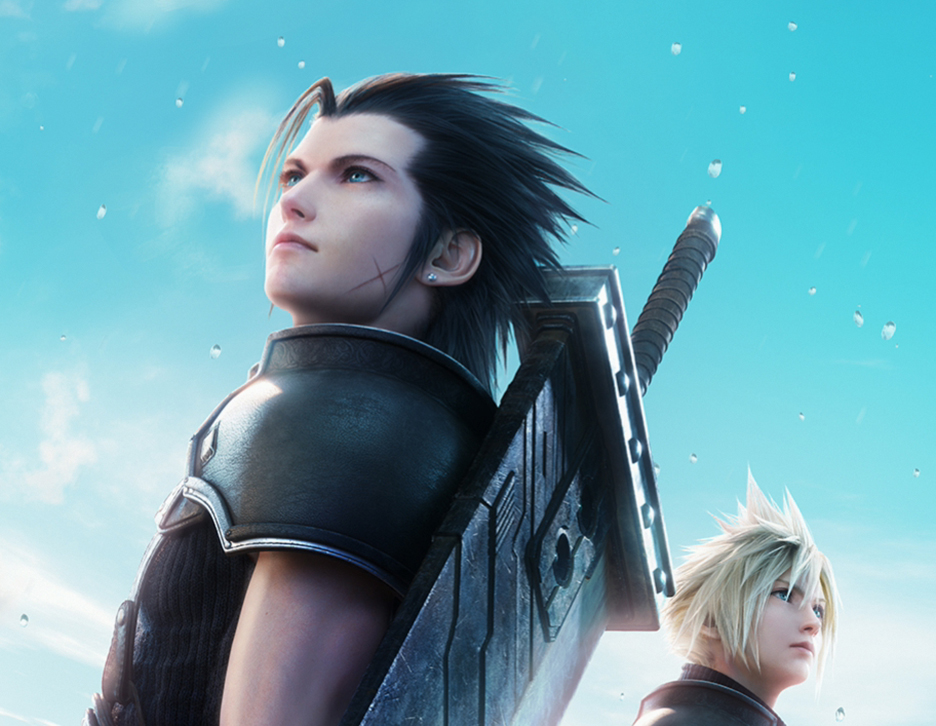
Crisis Core Final Fantasy VII: Reunion Review
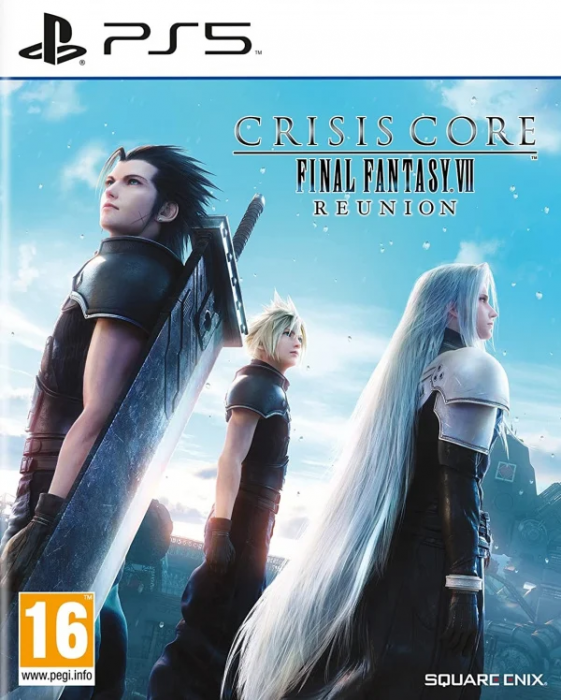
Pros
- Greatly improved graphics and performance.
- Numerous quality-of-life additions.
- Classic PSP game preserved on modern hardware.
- Addictive, simplistic gameplay loop.
- Amazing OST.
- Tons of minigames.
Cons
- Hundreds of recycled, bite-sized missions are out of place on home hardware.
- Combat is a bit cheap and unbalanced.
- Unfocused plot with a poor, tedious villain
- Tons of minigames.
Crisis Core: Final Fantasy VII originally launched for the venerable PlayStation Portal back in 2007, reigniting interest in and expanding the lore of the original Final Fantasy VII. Marooned on its hardware and not substantively followed up on, Crisis Core languished for years until the long-awaited Final Fantasy VII Remake was announced in 2015, fueling speculation on how - or if - Crisis Core’s contributions to the canon of Final Fantasy VII would be recognized. Just as importantly, would Crisis Core finally be freed from its handheld prison and adapted for modern hardware? That question wouldn’t be answered until 2022, when Crisis Core: Final Fantasy VII Reunion was announced for PC, Nintendo Switch, Xbox One/Series and PlayStation 4/5.
More than a mere port, Crisis Core: Final Fantasy VII Reunion turned out to be a complete overhaul of the original game. While not as reworked as Final Fantasy VII Remake would be, Crisis Core Reunion would benefit from overhauled graphics, a slew of quality-of-life additions, a retranslated script, and a new voice cast to go with it. The latter bit is a subject of some consternation for fans, but Crisis Core Reunion retains the same addictive gameplay and overarching story from the original. What you end up with is a more accessible, modernized, eye-catching version of a classic handheld game that’s fresh and ready for a new audience… or an old audience keen to immerse themselves in the lore before Final Fantasy VII Rebirth - the second part of the new Final Fantasy VII Remake trilogy - launches.
Story
Crisis Core: Final Fantasy VII Reunion follows the exploits of Zack Fair, a minor character in the original game whose role was initially more inspirational than interventionist. As the protagonist of this prequel, Zack’s importance (and strength) has been inflated well beyond what anybody playing the original would have expected. While some purists may chafe at this apparent discrepancy, it does serve to allow Zack to participate in lore-expanding events while fighting through the usual roster of iconic Final Fantasy enemies.
Zack’s rise through the ranks of SOLDIER - the elite military arm of Shinra, a despotic power company with all-but-realized aspirations of global domination - expands upon various events from the original game, from Shinra’s war with Wutai, Zack’s interactions with a certain flower girl in the slums, and the Nibelheim incident, to name a few. Zack’s earlier, more intimate perspective on SOLDIER and Shinra also facilitates an intriguing view into the inner workings of these organizations, demanding an expansion of the lore to include new SOLDIER personnel, including Kunsel, another low-level SOLDIER who is chummy with Zack, Angeal, Zack’s mentor, Genesis, a poetry obsessed 1st-class SOLDIER whose defection serves as the focal point for much of the plot, Lazard, the cryptic director of SOLDIER, and many more characters of varying importance.
Crisis Core Reunion follows the exploits of Zack Fair, an aspiring SOLDIER who is likeable, if a bit generic.
While the glimpses into the inner workings of SOLDIER and Shinra are fascinating - especially the bits where you get to witness Sephiroth before the events that led to him becoming the ultimate antagonist of Final Fantasy VII - the entire narrative suffers from its fragmentary, skin-deep treatment. The main story sprawls over ten relatively meaty chapters (not including the prologue), but all too often these are presented as poorly connected episodes. The beginning chapters feature a more coherent narrative than the rest, but later chapters zip around between plot points, apparently trying to complete a checklist of events before depositing you at the final dungeon. This disjointed narrative isn’t helped by the presence of two major time skips, nor by the fact that many scenes with important character development don’t take place via traditional in-game cutscenes or chatter but are instead randomly triggered by the DMW. More on this later, suffice to say that these DMW scenes can only occur during combat, new scenes unlock as you advance the main story, and it can take hours to witness specific scenes if luck isn’t on your side. Perhaps not the best way to dole out this sort of content.
[Crisis Core’s] disjointed narrative isn’t helped by the fact that many scenes with important character development don’t take place via traditional in-game cutscenes or chatter but are instead randomly triggered by the DMW.
To Be a Hero
As for our leading man, Zack is a genuinely affable character who stands out like a sore thumb amidst the self-interested schemers that populate the ranks of SOLDIER and Shinra. His optimism is shaken, but never broken, and in other characters this apparent lack of seriousness could further derail the semi-episodic narrative, but in Zack it comes across as a genuine - if naive - determination to make things work no matter how grim they seem. While Zack’s outlook may make him an endearing protagonist, his motivations are somewhat more lackluster, at first only proclaiming his vacuous desire to be “a hero” or pursuing equally insubstantial traits like “honor”. Typical fare for an anime protagonist, but not really traits that lend themselves to a lot of depth. Zack’s also surprisingly passive throughout much of Crisis Core, energetically pursuing whatever objectives the higher-ups assign him, only asserting independence when events preclude a more subservient approach.
Crisis Core Reunion’s disjointed narrative offers plenty of fanservice for those invested in the lore of Final Fantasy VII, but is otherwise lacking depth and coherence.
Zack is, then, a bit of a mixed bag as a protagonist. He has none of the doubts and flaws possessed by his successor, but consequently lacks the depth of Final Fantasy VII’s main character. This isn’t helped by the main antagonist of Crisis Core, Genesis, who may well be the most tedious villain in Final Fantasy history. Throughout much of the story you’ll find yourself facing off against Genesis’s horde of disposable minions, and when Genesis does deign to make an appearance, he’ll often squander it by babbling lines from his favorite work of fiction, a habit which unfortunately serves as a substitute for a personality. During the handful of scenes where Genesis actually has anything meaningful to say, Zack is on the periphery of events; Genesis and Zack have little reason to be directly opposed to each other until late in the game, and their final showdown seems more obligatory than anything else.
Between its unfocused, disjointed narrative, Zack’s shallow motivations, and having no real antagonist worth pursuing, Crisis Core Reunion is a game that greatly relies on the original Final Fantasy VII. If you haven’t played Final Fantasy VII or aren’t invested in the expanded lore and characters, you’ll probably find the narrative presented in Crisis Core Reunion lacking.
The antagonist of Crisis Core Reunion spends most of his limited time on-screen reciting poetry, making him a very tedious, underwhelming villain.
Gameplay
Originally designed for a handheld with relatively limited buttons, Crisis Core was one of Square-Enix’s early attempts at making an action roleplaying game. Consequently, Crisis Core Reunion is a relatively simple ARPG, with the number of usable items and stats trimmed down in favor of a more streamlined experience. With few exceptions, battles are designed to be quick and frenetic, if a tad inelegant at times.
The improved camera controls added for Crisis Core Reunion make combat less clunky on modern hardware, but the battles still bear the hallmarks of their origins, with most encounters taking place in small ad hoc arenas, which you can escape by running into the ring marking the boundary of the battle area. Encounters are “random” in that you usually can’t see enemies on the field before you encounter them (save for the bosses at the end of missions), but the old trick of hugging the walls as you traverse an area still works from the original game, allowing you to bypass hostiles - just assume every sufficiently open place houses a random encounter.
Other quality of life improvements abound - Zack can now block to reduce incoming damage, items occupy an item bar, making all eight of the game’s consumables (a paltry sum, by Final Fantasy standards) easily accessible, and quick access to all the spells and abilities provided by your equipped materia are a button press away. Most actions in combat are now at most two-button affairs, at worst, which is a significant improvement over the original.
As with the original Final Fantasy VII, materia is the focal point of combat in Crisis Core Reunion, serving numerous color-coded roles. If you want to steal, buff yourself with damage-reducing barriers, or cast offensive or curative spells, you’ll need to equip the corresponding materia. In addition, each equipped materia usually grants a bonus to a stat, making materia responsible for most of your abilities in combat as well as your various stats, with various accessories rounding out your arsenal by granting you more stats, resistances, immunities, and passive buffs.
Materia Fusion - now improved with a results preview - allows you to create new, more powerful materia with higher stat bonuses.
Shortly through the main story you’ll unlock materia fusion, which multiplies the already considerable importance of materia by allowing you to upgrade old materia into new (ideally rarer and more powerful) variants and improve the stat bonuses granted by this materia. If you wish to challenge the most powerful enemies in the game, you’ll need to spend considerable time and effort fusing materia, combining materia and various fusion items to get the best materia with maximum bonuses to your various stats. To this end, one of Crisis Core Reunion’s best additions is a results preview for materia fusion, removing the guesswork from the process… and let’s be real, the inevitable save scumming when you get something you don’t want.
You won’t need to fuss over these mechanics too much if you just want to beat the game, but if you like the grind and want to see everything Crisis Core Reunion has to offer, tuning all your materia will keep you busy. The addition of five materia/accessory loadouts you can swap between and the ability to retry failed fights without losing any progress - more features new to Crisis Core Reunion - further encourages experimentation.
Further streamlining some of Crisis Core’s RPG mechanics is the DMW (Digital Mind Wave, of course) which takes a variety of Final Fantasy staples and hides them behind a slot machine. Leveling Zack, his materia, using summons and performing limit breaks are all subject to the whim of the DMW, which will spin during combat on the top right of the screen. As you advance through the main story, meet new characters and encounter summons, new images will be added to the DMW, allowing different results to appear. Limit breaks and summons can be saved for later, allowing you to call upon them to deal damage, heal Zack, provide buffs and other useful effects. While random, the DMW tends to roll something up often enough to make it a regular feature of combat, and even near misses can provide various benefits, like healing or temporary reductions in MP or AP costs.
While the DMW does give the game a more arcadey feel, it’s ultimately a shallow and sometimes frustrating mechanic. The first time you’re interrupted by a cutscene that accompanies one of the DMW’s rolls, it may be a treat. After seeing the same scene half a dozen times, it’s a nuisance. Fortunately, in Crisis Core Reunion you can skip these scenes and Limit Break animations, taking a bit of the sting out. Since the results of DMW spins are somewhat randomized, it can become a bit of an arbitrary time-sink, especially when you’re trying to level materia or witness that one cutscene that just won’t trigger (we’re looking at you, Tseng). On the plus side, if you’re not opposed to some idle gaming, you can just enter a low-level mission and let the game run. Eventually all your materia will level up, and maybe Zack, as well. It’s not exactly compelling gameplay, however, and ultimately the DMW may detract more than it adds.
The DMW will randomly dole out buffs, summons and limit breaks.
Missions
Playing through the main story will give you a taste of the combat in Crisis Core Reunion, but much of the game’s content - and most of the game’s greatest challenges and most powerful loot - can be found in optional missions. You’ll unlock new missions as you progress the main story or by talking to other characters (some missions serve as venues for the game’s few side quests, although aside from talking to some NPC to start these missions, they’re otherwise indistinguishable from the more generic missions that unlock through story progression alone) and once unlocked missions can be attempted any time you’re at a save point.
Crisis Core Reunion shows its pedigree in various ways, but none are more pronounced than missions. Each mission is a short, self-contained dungeon with a singular goal: reach the baddy at the end and defeat it. It shouldn’t take you more than a few minutes to clear each mission, especially if you hug the walls to avoid random encounters, although there are a handful of missions overseen by an end boss with enough HP to drag things out - these may last around five minutes. It’s a good thing these don’t take very long, and that you can bypass most encounters by avoiding open spaces, as there are a whopping 300 missions in the game. Even maintaining a generous pace of two minutes per mission, you’ll end up burning ten hours of your life completing all these if you’re so inclined.
Back when Crisis Core was confined to the PlayStation Portable, booting up the game and knocking out a mission or two when you had some free time on the bus, train, between classes, on a break, or wherever else made a lot of sense, and this is undoubtedly what was in the developer’s mind back in the day. On more traditional consoles, the game’s missions are more than a bit out of place, and a stark reminder of the game’s origins. This may be mitigated considerably by playing on the Switch or Steam Deck, where the missions can be played in their intended context, but if you’re playing the game on less mobile hardware, sitting in front of a screen through scores of cookie-cutter missions will start to feel like a chore… Especially when you realize that there are only a handful of different dungeon designs, which are merely cordoned off and populated with different monsters.
If you ignore the missions and just focus on the main story, you’ve just scratched the surface of what Crisis Core Reunion has to offer.
If you want to encounter the game’s most iconic enemies and grab its best loot, you’ll need to slog through its 300 optional missions.
There’s incentive to bear with the tedium of the game’s overly abundant missions, however, as it’s only in the most difficult missions that Crisis Core Reunion’s combat reaches its absurd heights. To give some perspective, each mission has a difficulty rating of one to ten stars, and the final dungeon in the main story is populated with monsters found in roughly the five-star difficulty range, with just over 200 of the game’s 300 missions having a five-star rating or higher. If you ignore the missions and just focus on the main story, you’ve just scratched the surface of what Crisis Core Reunion has to offer.
You’ll earn a completion reward for finishing a mission for the first time, and each mission also houses a varying number of chests you can loot for bonus treasure, with the quality of rewards and treasure roughly corresponding to the mission’s difficulty. You can replay missions as many times as you wish, and while the aforementioned rewards and chests cannot be obtained again, you can use these missions to farm enemies, who may have rare items that can drop or be stolen. Best of all, there’s no risk inherent in undertaking missions. If you die, you’ll be prompted to retry the encounter (with the option to hit the inventory screen to fiddle with your loadout, if you wish), but if you bite off more than you can chew, the worst-case scenario is a trip back to the last save point. The only progress you can lose is whatever gains and losses you’ve made in the mission you failed - you only get to keep your plunder if you complete the mission. Since missions are so short, however, a failed attempt is never going to set you back significantly, encouraging experimentation and, frankly, reckless attempts at missions you really have no business being in.
Despite the complaints we may have with missions, it’s undeniable that the game’s greatest thrills come from them. Should you manage to persevere and survive through a high-difficulty mission and claim a potent accessory or piece of materia in the process, the power gains can be simply stupendous. Collecting this high-tier gear has a cascade effect where the previously impossible becomes trivial and crossing the four-digit Rubicon and slugging it out with bosses who have over ten million HP is a great experience, one that lingered with us longer than most of the story beats. These gains can be made surprisingly early, too, as the missions are completely unbalanced from the main story - you can conquer the game’s superboss in Chapter 4 if you’re really determined to do so. Needless to say, this will make you exponentially stronger than anything the main story will throw at you, and the game doesn’t really have any tricks up its sleeve to counter such overleveling.
Over the course of the game, Zack can become absurdly strong… something the game tries to counter through incredibly cheap tactics like instant death attacks and HP% damage attacks.
The main story might be a pushover for a high-level Zack, but the game’s toughest missions are anything but. You will need the best materia loadout - ideally with each piece of equipped materia give you +100 to various stats and +999% to HP, and an arsenal of accessories granting various effects like breaking the damage and HP limits (allowing each to reach 99,999 instead of the default 9,999 cap), making you immune to elements and status effects, reducing or eliminating MP and AP costs, and other useful effects. The most difficult missions demand nigh omnipotence out of Zack, and having granted him that, the game’s balance is stretched to the point of breaking in a silly attempt to provide a challenge.
Enemies that can inflict instant death with each attack or who deal a percentage of your HP with certain attacks (even reducing you down to 1 HP regardless of your stats, immunities or defenses!) are common in ten-star missions. It’s all just a blatant series of gear and stat checks that make sure you’ve done the appropriate legwork before daring to challenge the game’s most difficult mission, but it comes across as unbalanced and lazy, and encourages you to seek out cheese strategies to counter it.
Like most Final Fantasy VII games, Crisis Core Reunion is full of minigames, which breaks the monotony of combat somewhat… and in some cases, will test your patience.
Mini Games
It wouldn’t be a Final Fantasy VII game without mini games, which thoroughly infest Crisis Core. These are as varied as they are numerous, sometimes requiring you to seek out and eliminate numerous groups of enemies in a maze, sit through some overly serious scientists as they fuse materia (no judgment - this is their Super Bowl), cut a series of missiles out of the air with your sword, show off your conditioning by engaging in competitive squats, sneak into an enemy base, snipe some robots and catch treasure chests as they fall down a waterfall.
[Minigames]… provide a break from the otherwise one-note gameplay of Crisis Core Reunion. On the other hand, some of them can prove to be fairly tedious.
These minigames obviously aren’t meant to be taken seriously, and they provide a break from the otherwise one-note gameplay of Crisis Core Reunion. On the other hand, some of them can prove to be fairly tedious, forcing you to display competence at various tasks the game otherwise doesn’t emphasize, and if you’re an achievement hunter you may find yourself getting hung up on this - let’s face it - self-imposed busywork. If completionism bothers you, you’ll find Crisis Core Reunion to be a harsh taskmaster, as almost all of its achievements are missable, virtually requiring a guide if you want to ensure you find/see/complete everything the game has to offer.
Crisis Core Reunion is more than a remaster, but less than a remake. Its graphics are much improved, but a cursory glance will dispel any notions that they’re up to modern AAA standards.
Graphics and Sound
Back in 2007, Crisis Core was noteworthy for bringing appealing PlayStation 2 graphics to a handheld device. It wasn’t outlandishly gorgeous, even for its time, but only several years removed from Final Fantasy XII - the latest mainline Final Fantasy game to launch at that time - it was fairly impressive. On a 3.8 inch screen. At 480 x 272 resolution. In 2007.
Obviously, standards have changed, and to that end, Crisis Core Reunion got a full makeover. It’s not quite a remake - the core gameplay and mechanics are largely the same - but it’s more than a simple remaster. On sufficiently powerful hardware the game will run at 4k/60fps, and the graphics have been entirely overhauled to ensure you’re not looking at unsightly blobs of jagged colors. The textures, animations and lighting effects are all greatly improved - enough so that a casual observer would consider the game to be downright competent by modern standards - but graphical flaws like flat grassy textures painted (unconvincingly) to look 3D, jarring transitions between certain floor and wall textures, and various bits of simple, crudely animated foliage are all there to prevent you from seriously confusing it with a modern game. The addition of various design elements recycled from Final Fantasy VII Remake (the item-dispensing vending machines in particular caught our eye) help draw greater continuity between the modern remake and this even more current remaster, and all in all, the work done on Crisis Core Reunion seems like a fine compromise between updating a classic game for new hardware while avoiding an overly robust and time-consuming development cycle.
…all in all, the work done on Crisis Core Reunion seems like a fine compromise between updating a classic game for new hardware while avoiding an overly robust and time-consuming development cycle.
The music, sound and voiceovers for the game have been tweaked, as well. Unless you’re an audiophile or you go out of your way to listen to the Crisis Core and Crisis Core Reunion side by side, you likely won’t notice major differences in the OST - the original version was excellent and has aged exceptionally well. If it ain’t broke, don’t fix it.
Sadly, that rule apparently didn’t extend to the voiceover, which has seen the original cast replaced with the new actors used for the characters in Final Fantasy VII Remake. This is, in most cases, either a lateral change or an upgrade, and the overall number of voiced over lines have been increased, making this seem like… well, less of a budget, mobile experience. There’s one glaring exception, however. Zack. His new voice over has changed substantially from the original, and the difference can be quite jarring to veterans. The first few chapters are particularly rough, with the new actor having a more boyish, less serious take on the character. We grew used to the change within a few hours, and honestly it wasn’t enough to hinder our enjoyment of the game, but judging by online animus, we’re in the minority.
One final gripe with the game’s sound - this one being simultaneously trivial and yet more legitimate than complaints about Zack’s new voice over - is the unfortunate decision to have a computerized voice announce “Activating combat mode” every time you get into a fight and “Conflict resolved” every time you dispatch your enemies. In a game where you can easily end up engaged in dozens of encounters in a short span of time, this can get awfully grating, especially if you’re grinding. Can we just mute the voice volume? Yes. Should we have to? No.
Conclusion
Crisis Core was an enjoyable, albeit flawed game when it launched on the PlayStation Portable in 2007, and there are a few ways to go about grading a review of Crisis Core Reunion. This new version of the game has seen a multitude of changes and improvements that not only rescues the game from its confinement on old hardware and gives it a fresh coat of paint, but also introduces numerous quality-of-life features make the game far more accessible and smooths out some rough edges. Crisis Core Reunion is an upgrade over the original in almost every way, but it also preserves many of the original game’s flaws - perhaps out of a sense of fidelity, perhaps just to keep the project on-time and under budget so it could be reintroduced to the Final Fantasy VII canon a year before the launch of Final Fantasy VII Rebirth.
If you were expecting Square-Enix to put the same level of effort into this project as they put into Final Fantasy VII Remake, you may be disappointed… If you wanted Crisis Core in its original glory - perhaps with a few of its warts removed - then Crisis Core Reunion is what you’ve been waiting for.
Crisis Core Reunion is a prettier, smoother, less fiddly version of an old portable game, for better or worse. If you were expecting Square-Enix to put the same level of effort into this project as they put into Final Fantasy VII Remake (one hideous door texture aside), you may be disappointed. If you expected a fully modern gaming experience for home hardware, that’s not what you’re getting. If you wanted Crisis Core in its original glory - perhaps with a few of its warts removed - then Crisis Core Reunion is what you’ve been waiting for… minus a nitpick or two.
Me? Gongaga.
An excellent master of a flawed old handheld game, with somewhat fewer warts.
Gameplay:
Sound:
Graphics:
Story:
Value Rating:

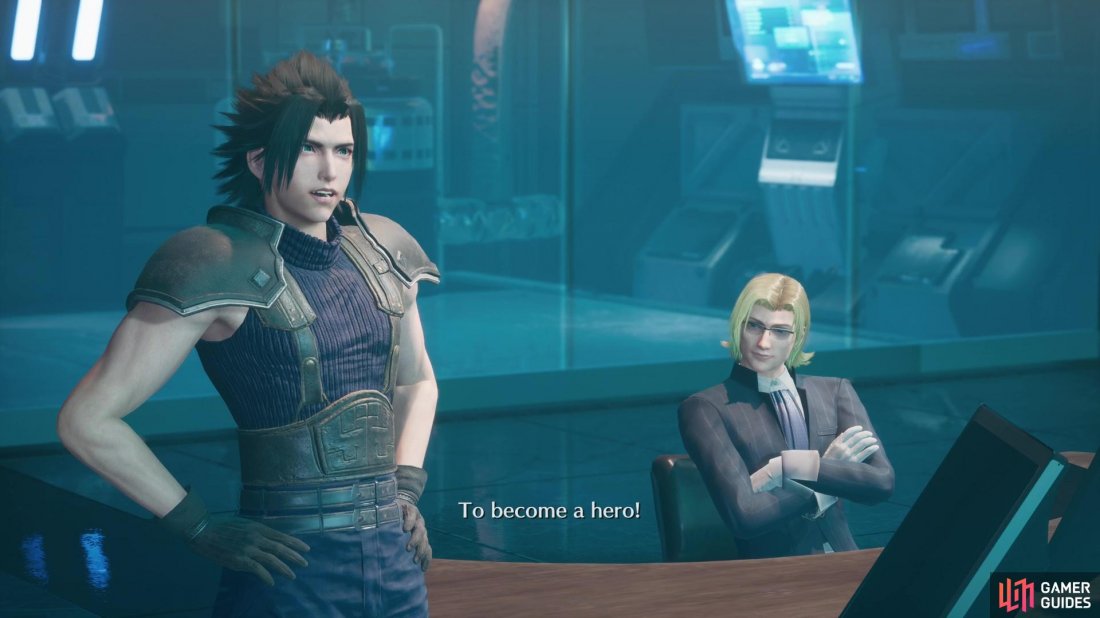
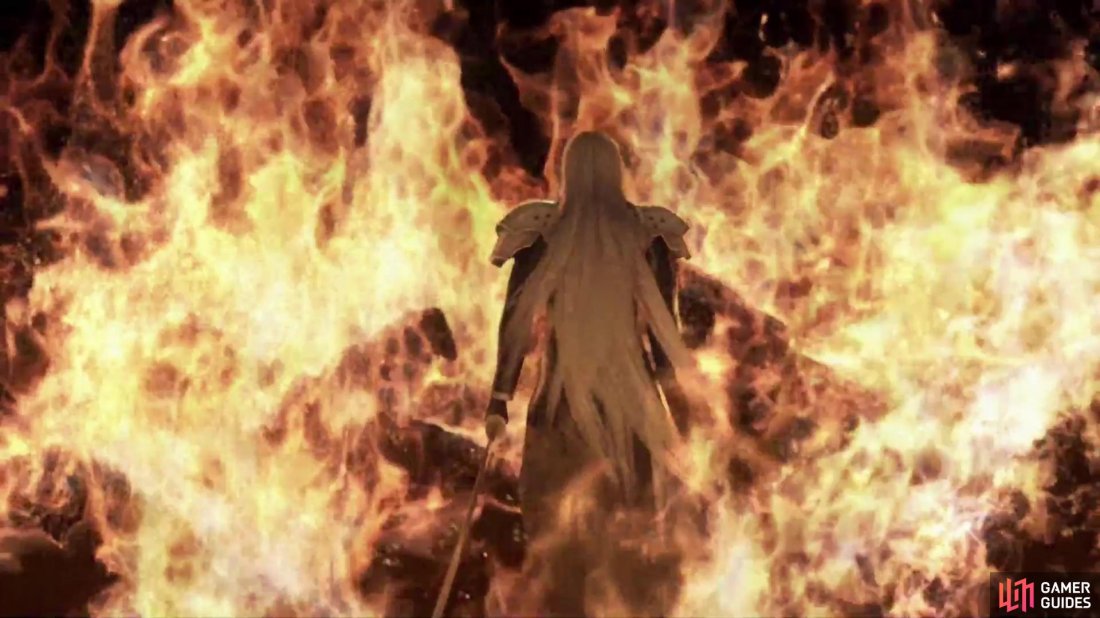
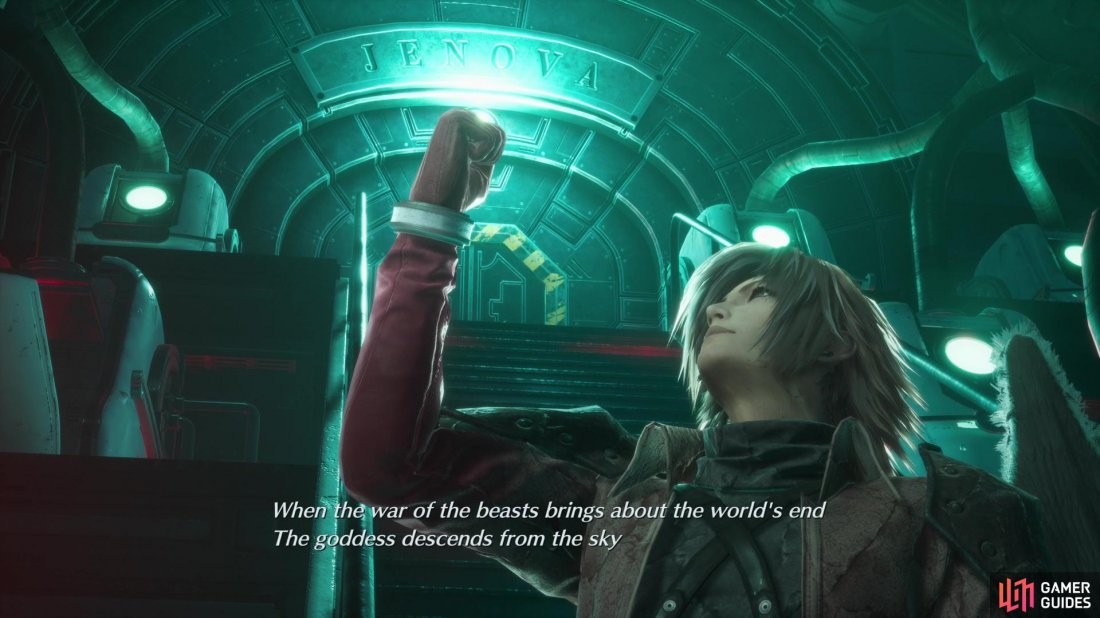
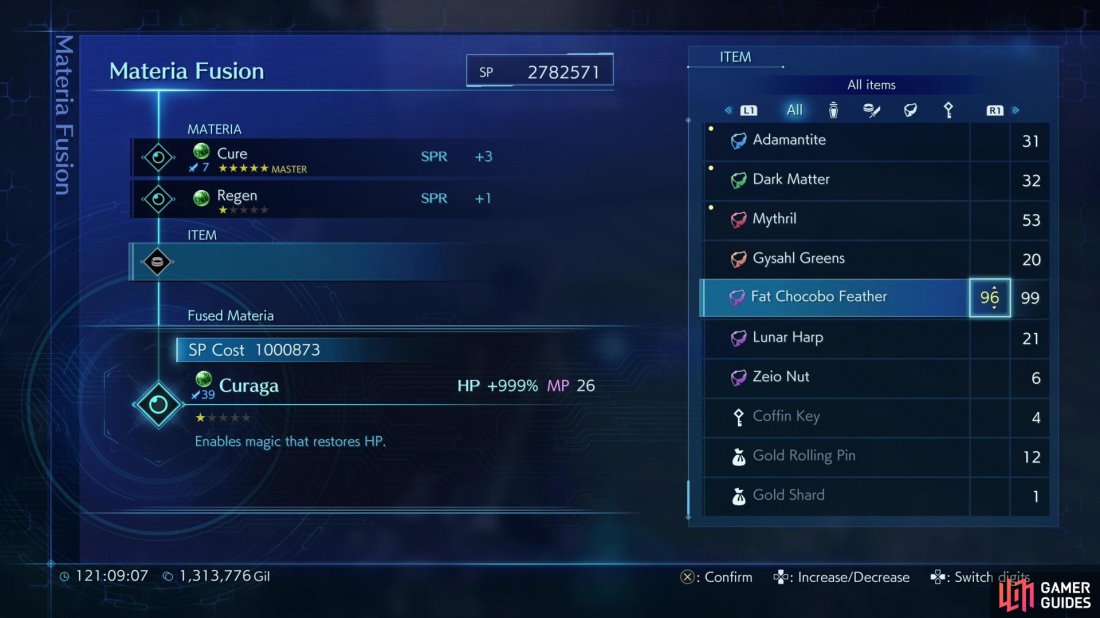
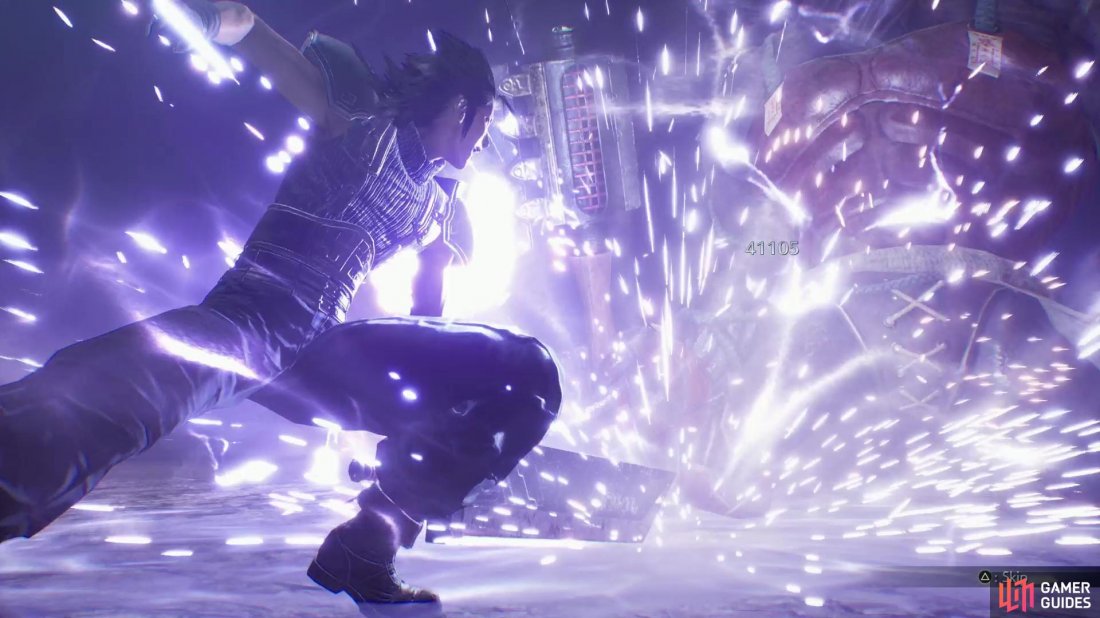
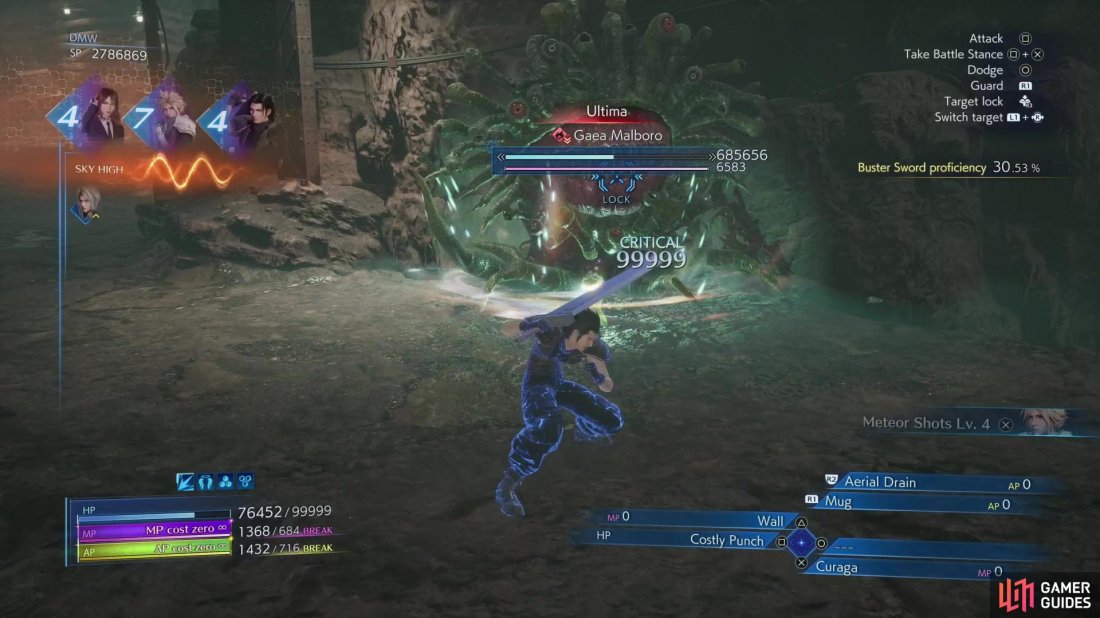
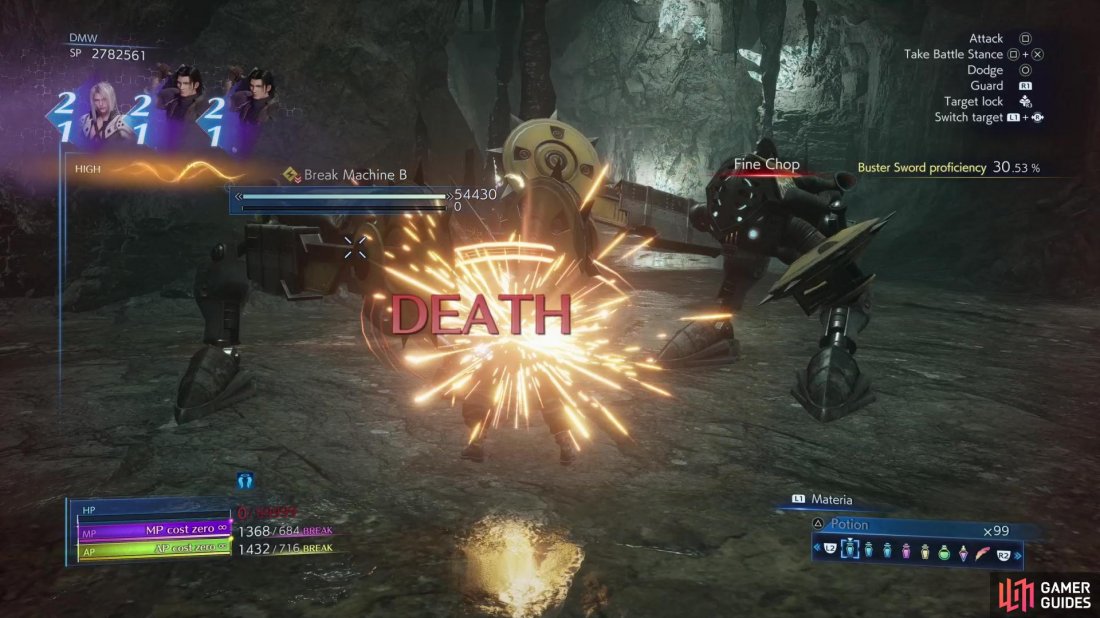
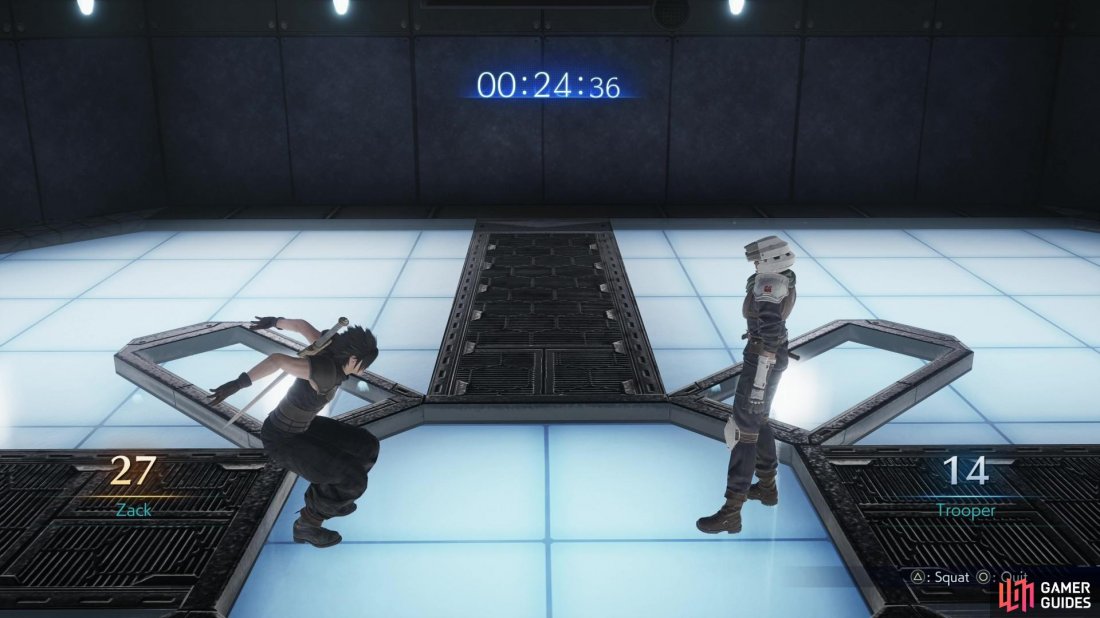
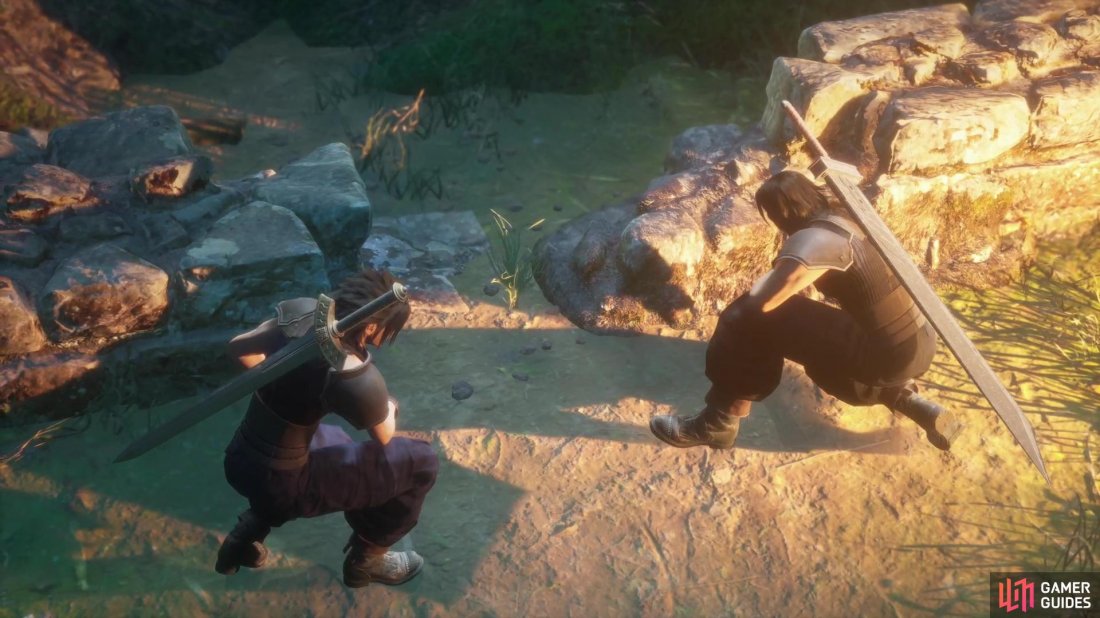
 Sign up
Sign up
No Comments